Nurse Suzie Smith dies from injuries. Show Up for REACH: Build the Mendocino Coast Care Package
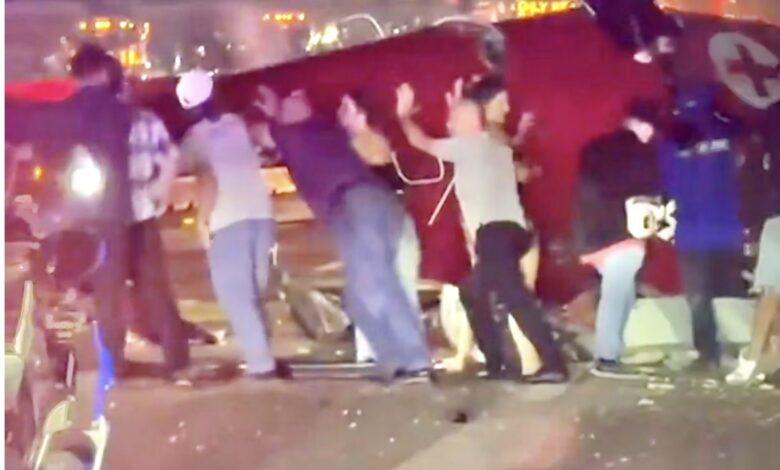
Reach pilot was a former CHP officer and decorated firefighter who apparently saved lives with a crash landing
On Saturday, Reach announced the death of flight nurse Suzie Smith in Saturday’s helicopter crash in Sacramento. Two others remain hospitalized and recovering.
- Pilot Chad Millward, 60, of Palo Cedro,
- Paramedic Margaret “DeDe” Davis, 66
- Nurse Susan “Suzie” Smith, 67, deceased.
“Our REACH family is devastated to share that Susan “Suzie” Smith has passed away from injuries sustained during the accident involving helicopter N414RX on Highway 50 on Monday night.
We will remember Suzie as a pillar of the EMS and healthcare community who saved countless lives by delivering compassionate care in their darkest hours. Suzie’s 50-year career as a nurse included nearly 21 years with REACH, and we are proud to call her our colleague and friend. We hope she is remembered for the light she brought to every call, every shift, and every patient she blessed with her care.
We grieve Suzie’s loss with her family, friends, colleagues and the entire community that she faithfully served. Her impact will be felt for years to come through the lives she touched, the teams she strengthened, and the compassion she embodied. Thank you for keeping Suzie’s loved ones and our REACH family in your thoughts and support for our team during this difficult time,” the company announcement read.
These folks need love. And here on the Mendocino Coast, we owe it to them more than most. In a region where a helicopter isn’t just a luxury—it’s a lifeline—every crew member matters. We know what it means to wait for help from the sky, to count on that rotor hum when roads run out and time runs thin. Their recovery is our gratitude in motion.
Calling All Mendocino Businesses: Let’s Lift Up Our Heroes This week, REACH Air Medical Services faced an unimaginable tragedy—one of their helicopters crashed near Sacramento, claiming the life of a crew member and deeply impacting the entire team. These are the brave souls who fly into danger to save ours. Now it’s our turn to show up for them. We’re building the most epic Community Gratitude Basket Mendocino has ever seen—stuffed with love, local gifts, and gift certificates from every corner of our coast. If you’re a business owner, artist, maker, or giver, we invite you to donate something special. Let’s wrap our arms around these crews with the kind of support only Mendocino can deliver. Every gift counts. Every gesture heals. Let’s do this together.
Want to help?
Email frankhartzell@gmail.com with “I want to help REACH” in the subject line. Mendocinocoast.news
is proud to team up with our fantastic local Fort Bragg LIONS Club to lead this effort. We’re gathering gifts and gift certificates from across Mendocino—meals, massages, motel stays, art, adventure outings, and everything in between—to build a giant Community Gratitude Basket for the heroic crews of REACH Air Medical Services. These are the folks who fly into danger to save lives. Now, after a devastating crash near Sacramento that claimed one of their own, it’s our turn to lift them up. Let’s show them how deeply Mendocino cares—with comfort, kindness, and a basket full of local love.
And why stop there? Perhaps the Coast should host an annual BBQ for Reach—maybe at MacKerricher, with Airbnbs for the crew. What they do is worth it. And we never want them to forget how much this community cares.
Mendocinocoast.news takes this Sacramento-Davis freeway helicopter crash personally—and locally. These Reach crews fly nearly daily into Adventist Health Mendocino Coast Hospital, providing lifesaving transfers to trauma, stroke, and heart centers. While hospitals across Mendocino and Lake counties rely on this network to triage and diagnose patients locally before sending them to top-tier surgeons elsewhere, the Coast carries a deeper debt.
Here, helicopters don’t just save lives—they spare us the grueling ambulance ride over State Route 20. When Reach lifts off from our hospital, they often spare patients the long, winding haul inland. Sometimes they rendezvous at Camp 20 or Little River to avoid bad weather. Even stabilized, that ambulance ride is a tough deal—especially for the sick and fragile.
Getting to a trauma, stroke, or heart center is lifesaving. And we have met these pilots, paramedics, and nurses. I think of them as traveling angels. They might start in Willits, swing through Napa, and end their day in Sacramento. They belong to all our communities—and to their own airborne one.
That community was rocked when a Reach helicopter apparently suffered a mechanical malfunction less than a minute after leaving the UC Davis trauma center. The pilot made a miracle landing on Highway 50, hitting no cars. One driver locked up the brakes and ended up just inches from the fuselage, according to the Sacramento Bee.
The Bee—where I once covered Yuba and Sutter Counties—is a shadow of its former self, but still staffed by real journalists. That’s a lifesaver in this case, too.
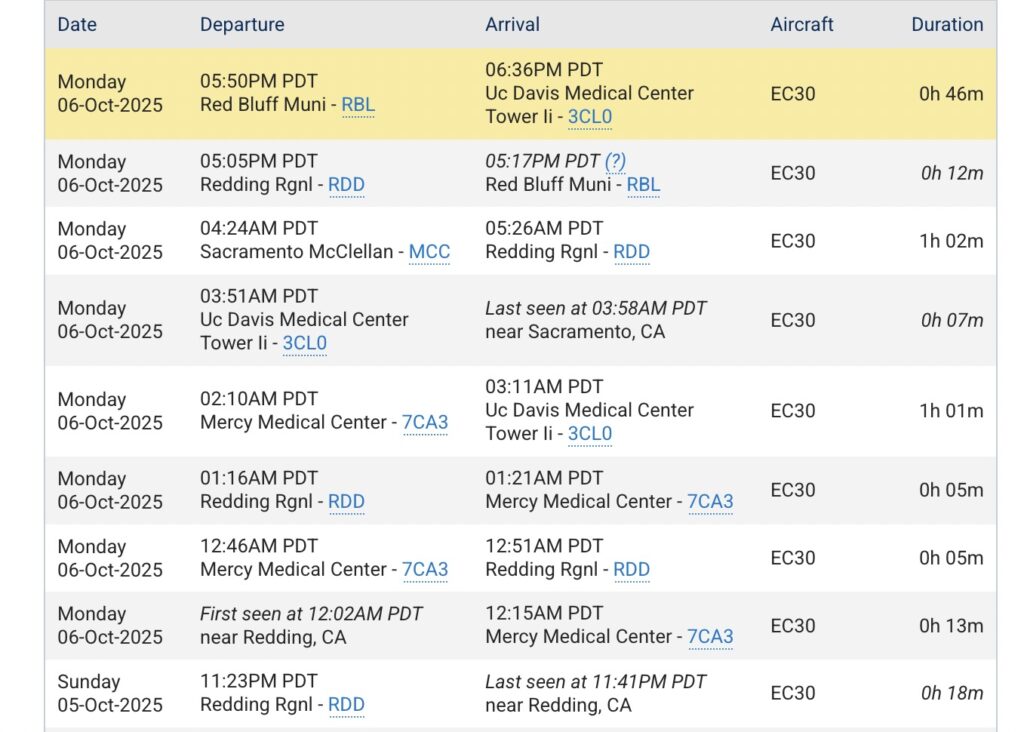
The injured and the person who died:
- Pilot Chad Millward, 60, of Palo Cedro,
- Paramedic Margaret “DeDe” Davis, 66
- Nurse Susan “Suzie” Smith, 67, deceased.
- (Ages according to the Sacramento Bee)
A REACH Air Medical Services helicopter crashed Monday evening onto State Route 50, just after rush hour. The aircraft had lifted off from UC Davis Trauma Center and, according to the Sacramento Bee, went down less than 30 seconds later.
Miraculously—or thanks to the pilot’s extraordinary skill—the helicopter missed every vehicle on the freeway. One driver reportedly locked up the brakes and stopped just inches from the fuselage. A cloud of white smoke filled the air, a fire suppression measure. No fire occurred.
First responders moved fast. They reached the pilot and flight nurse Davis, triaged them on site, and got them into ambulances—headed back to the very trauma center they’d just departed.
Then came the most terrifying part. Nurse Suzie Smith was trapped beneath the wreckage. The fire captain, thinking fast, recruited passing motorists—strangers who had stopped in shock and concern. About ten people, from a powerful farmer to a woman in a halter top, lifted and shoved the mangled helicopter off Smith, rescuing the most severely injured crew member.
They weren’t trained. They weren’t equipped. But in that moment, they moved like a unit—like Marines on a mission. Just ordinary Americans driving down Highway 50, summoned by crisis and rising to meet it.
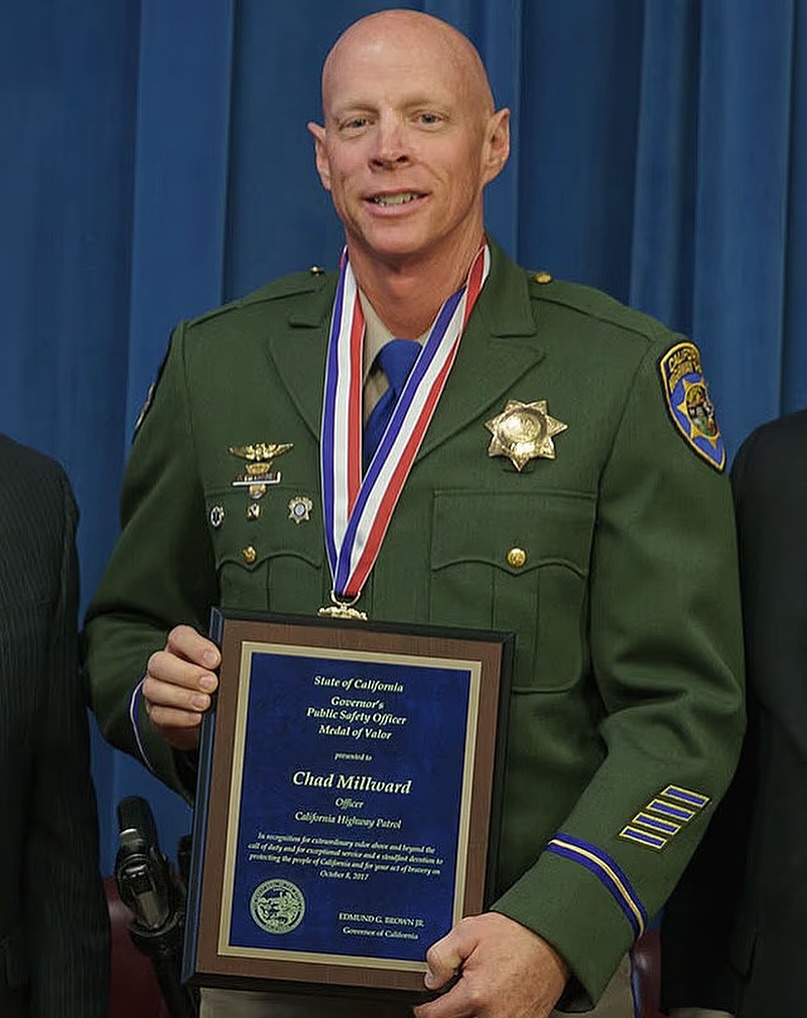
Founded in 1987 by Dr. John McDonald Jr. of Santa Rosa Memorial Hospital, REACH (Redwood Empire Air Care Helicopter) now operates 30 bases across eight states. The company acquired former rival Calstar in 2016, expanding its reach and resources. Their crews typically include two paramedics and a pilot, many trained to fly in adverse conditions—even without instruments. They don’t just transport—they stabilize, they intervene, they save.
Here is a story Frank Hartzell wrote for MendoFever about how a Reach Crew leaving the hospital reported a potentially very dangerous fire on Bald Hill, resulting in it being quickly put out. Wow! This could have been a community catastrophe!
How Rare Are REACH Crashes?
Here are some incidents we found about Reach crashes. Reach and all other air ambulances are rated very safe, more safe than auto travel. In recent years, the percentage of fatal accidents have fallen. But all crashes are remembered for many years especially when these courageous people die… Two of the worst incidents in the history of the entire company happened in Mendocino and Humboldt Counties. In fact, very little comparable tragedy has happened outside our immediate area, although Reach has flown over the entire region for decades.
- 2015: A training accident in Apple Valley involving a towel sucked into the tail rotor. No injuries.
- In July 2016, a medical transport plane (not a helicopter) operated by Cal-Ore Life Flight, a subsidiary of REACH Air Medical Services, crashed in Humboldt County, killing all four people on board. Pilot Larry Mills had more than 20 years of flying experience and had been a volunteer first responder for 12 years when in April he started flying for REACH’s Cal-Ore Life Flight based in Crescent City near the Oregon border. Flight nurse Deborah Kroon and certified flight paramedic Michelle Tarwater were aboard a Piper PA31T Cheyenne turboprop with a female patient when the plane crashed sometime after 1 a.m. Friday on private timberland about five miles north of the Arcata-Eureka Airport. They had been headed from Crescent City to Oakland International Airport. National Transportation Safety Board Investigators eventually said the pilot misjudged the weather and failed to use navigational instruments that might have helped him avoid clipping a tree. (Verbage is from NTSB).
- 2022: A bird strike near Yuba City injured a pilot’s leg. No other injuries.
- 2025: This week’s Sacramento crash. Cause still under investigation.
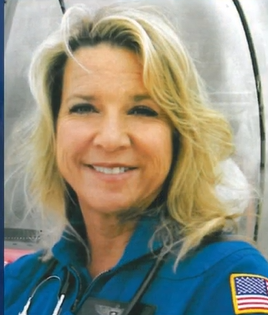
The other tragic Reach related crash happened near Willits in 2003. In December 2003, three people, including a pilot and two nurses, were killed when a REACH (Redwood Empire Air Care) helicopter crashed into a ravine near Willits, California, en route to pick up a patient who had attempted suicide. The National Transportation Safety Board (NTSB) determined that the pilot, Art Gotisar, misjudged the weather and failed to use navigation instruments, which led to improper in-flight planning and the fatal accident. There was no patient on board at the time. Also killed were Kelly Bates, flight nurse and Diane Codding, flight nurse .
REACH averages about 1,800 flights annually nationwide. With 30 bases and a strong presence in Northern California, Mendocino County likely sees hundreds of those flights each year. That means the three incidents represent less than 0.2% of total flights over a decade—and even fewer when narrowed to our coast. Statistically, REACH flights remain among the safest forms of emergency transport.
Local Voices, Local Impact
Fort Bragg nurse and longtime REACH collaborator Maria Lopez put it best: “We see these crews as part of our extended hospital family. They don’t just fly—they show up in the worst moments and make survival possible.”
Her words echo across the Mendocino Coast, where REACH isn’t just a service—it’s a lifeline. These crews don’t just land. They arrive when time runs out, when roads fail, when hope hangs by a thread. And they carry us forward.
And they do it without fanfare. No sirens, no headlines—just a rotor hum and a promise kept.
But this week, that promise faltered. With the FAA and NTSB both impacted by the ongoing government shutdown, it remains unclear whether federal investigators are actively reviewing the Sacramento crash.
It’s a silence that rings especially loud in rural communities—places like ours—that rely on transparency, trust, and timely answers. According to the NTSB website, no cases are being updated, and no new investigations are being added during the shutdown.
When oversight stalls, so does accountability. And for communities that depend on air rescue as a lifeline, that’s more than bureaucratic delay. It’s a breach of faith.
Nurse Suzie Smith is known not only for her service across Northern California, but also for her work as a medical missionary in Nicaragua and Sri Lanka. Her reach—both literal and figurative—has spanned continents and communities.
Her family and friends describe her as “tough as nails” and “dedicated to serving others,” and have asked for prayers for the recovery of all three crew members. Smith was publicly identified by her family, while the names of the other two have not yet been released.
As the community rallies around Smith and her crew, Mendocino County residents are reminded of the quiet heroism behind each flight—and the fragility of the systems that keep rural healthcare connected. Every rotor hum carries more than a patient—it carries trust, urgency, and the weight of a community that knows what it means to wait. In places where roads twist and time matters, REACH isn’t just a service. It’s a promise. And this week, that promise was tested.
These helicopters don’t just skim the skies—they stitch together the fractured edges of rural medicine. They rise through fog, wind, and bureaucratic silence to deliver what the coast cannot always provide: time, expertise, and a fighting chance.
In a region where geography delays and systems strain, REACH crews become the connective tissue—linking isolated patients to urgent care, and isolated hospitals to the broader web of survival.
And when one of them falls, we feel it in our bones. In every ER hallway where a REACH crew once landed. In every family that got one more day. In every nurse who knows the sound of rotor blades means hope.
Their absence echoes through the places they’ve saved—through the lives they’ve touched, the roads they’ve bypassed, and the moments they made survivable. On the Mendocino Coast, we don’t just hear helicopters. We feel them. And when one goes down, it’s not just metal and sky—it’s family.
Margaret “DeDe” Davis has spent her life chasing the call to serve. She enlisted in the Marines at 18, then transferred to the Navy to pursue her dream of becoming an emergency responder. Her path led her to volunteer firefighting in Chester, a small town in Plumas County, and eventually to the skies—joining MedX AirOne in Nevada as a flying paramedic in 2019.
Her story, spotlighted by Intermountain Health, is one of grit, purpose, and unwavering dedication. Davis didn’t just choose service. She built a life around it.
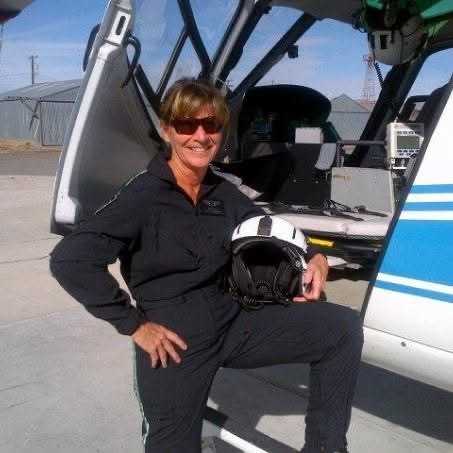
A recent study in a medical journal focused on air flight safety found a promising trend: deaths in medical air transport have been decreasing in recent years—even as the number of helicopters and fixed-wing aircraft has tripled.
But the picture isn’t all reassuring. The number of total crashes per million miles flown hasn’t changed dramatically, despite major advances in helicopter safety and weather forecasting.
One critical factor stood out in the research: pilot experience with the specific aircraft type. Familiarity matters. And in high-stakes moments, it can mean the difference between a safe landing and catastrophe. Read the article: Analysis of Helicopter Air Ambulance Accidents in the United States From 2010 to 2021 – Air Medical Journal
This week, we don’t just pray for recovery—we recommit to a deeper truth: That rural lives matter. That they deserve swift care, clear answers, and the kind of infrastructure that doesn’t vanish when the government shuts down.
Because when the skies go quiet, when oversight stalls, and when systems falter, it’s communities like ours that feel the tremors first. And it’s up to us to make sure we’re not forgotten.
Because out here, heroism isn’t loud. It flies low, lands hard, and saves quietly. It doesn’t ask for applause—it asks for trust. And when it’s grounded, we rise.
We rise with care packages and BBQs. We rise with prayers and press releases. We rise with truth, accountability, and the kind of love that remembers every rotor hum.
Because on the Mendocino Coast, we know what lifelines sound like. And we never forget who brings them.
The aircraft involved in Monday’s crash was an Airbus H130, a European-made medical helicopter registered as N414RX. According to flight tracking data and multiple reports, the helicopter had completed seven flights between the early hours of Monday morning and the moment it went down on Highway 50. Its path traced a familiar lifeline—up and down the medical corridors of Northern California, with stops in Redding, Red Bluff, UC Davis, and a Sacramento hospital.
This wasn’t a sightseeing tour. It was a day of urgent transfers, critical care, and high-stakes logistics. Each flight carried the weight of rural medicine—patients stabilized in small hospitals, then flown toward trauma centers with the speed and precision only air rescue can provide.
The H130 model is designed with safety in mind, including features to prevent post-crash fires. And yet, despite technological advances and improved weather forecasting, crash rates per million miles flown have remained relatively steady in recent years. A key factor, according to recent research, is pilot experience with the specific aircraft type—a reminder that even the best machines rely on human mastery to perform under pressure.
This week, that mastery was tested. And while the crew’s survival is a testament to their skill and the swift response of bystanders and first responders, the crash is a sobering reminder of the fragility behind the heroism.
The aircraft involved in Monday’s crash was an EC130 T2—a single-engine helicopter from Airbus, formerly Eurocopter. It’s known for its quiet operation, advanced anti-vibration system, and safety-forward design. Powered by an Arriel 2D engine and equipped with a Fenestron tail rotor, the EC130 T2 offers a spacious cabin that can accommodate up to seven passengers—ideal for medical transport missions.
The “T2” designation marks a leap forward from the earlier EC130 B4 model, with a more powerful engine, upgraded gearbox, and a modernized cockpit designed for comfort and control.
This aircraft had flown seven missions on the day of the crash, tracing a path between Redding, Red Bluff, UC Davis, and Sacramento—each flight a thread in the fragile web of rural emergency care.
Even with technological advances, safety still hinges on human experience. Recent studies show that pilot familiarity with a specific aircraft type remains one of the most critical factors in crash prevention. And when the system falters, it’s not just metal and machinery—it’s lives, communities, and trust.
And so we end with this: Because out here, heroism isn’t loud. It flies low, lands hard, and saves quietly. And when it’s grounded, we rise.
We rise with casseroles and care packages. With prayers, press releases, and the kind of love that remembers every rotor hum.
If you want to help with the care package effort, email frankhartzell@gmail.com with “I want to help Reach” in the subject line. Thanksgiving Coffee, Northcoast Brew, Angel’s salves—we’re gathering what heals.
Because on the Mendocino Coast, we know what lifelines sound like. And we never forget who brings them.
Editor’s Note: We chose not to share the viral video of the crash circulating online. Out here, we value dignity over clicks. The story of this crew deserves reverence, not replay.
